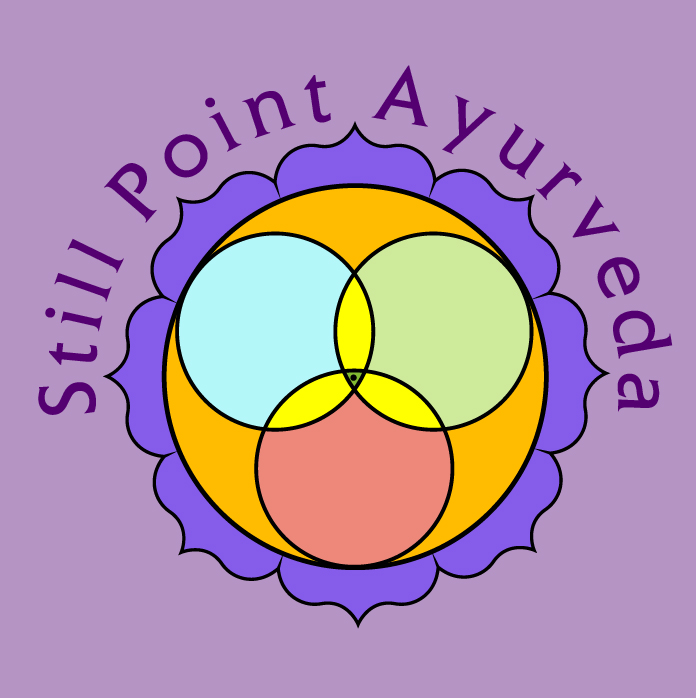OWN YOUR HEALTH: AYURVEDIC FOOD FOR THOUGHT
/According to Ayurveda, health is a very specific individualized experience which is known as “Svastha” and is rooted in the state of equilibrium that any given person has which is unique to their constitution and normal for their overall well-being. Caraka states “prayōjanaṁ cāsya svasthasya svāsthya rakṣaṇam āturasya vikāra praśamanaṁ ca ||Ca Sū 30/26|| and translates as “The purpose of Ayurveda is to preserve the health of the healthy and alleviate the disorders of the sick.”
In this context, it is important to consider the various components and categories that comprise an individual’s whole being life experience. These categories are innate constitution, exercise, sleep, relationships, environment, routines, food, digestion, immunity, mind and spirit. It is important to assess these different facets of life that make up the human experience and determine the level of quality they possess and whether or not they are either contributing towards health and well-being or ill health and disease. Here are some basic and general questions to consider:
1) How is my sleep? Too much, too little, or just right.
2) How much exercise am I getting? Too much, too little, or just right.
3) How are my relationships? Stressful, lacking, or mostly adequate.
4) How is my food intake? (this includes beverages, anything lickable, eatable, drinkable, and chewable)
5) How is my digestion? Symptomatic, asymptomatic, unsure.
6) What is my constitution? Strong, medium, more sensitive.
7) How is my immunity? Strong, medium, more sensitive.
8) How is my mind/spirit? Uplifting, balanced, strong, medium, more sensitive.
9) Do I have routines and what does it look like? Consistent, variable, unsure.
10) What is my environment like? External as far as climate/geography, home life, and general surroundings. Is there a sense of calm, ease, comfort, discomfort, stability, or instability?
In Ayurveda, when we are able to tune in and have an awareness of what our state of Svastha looks like we can manage from there the different categories that may seem out of sorts and make changes accordingly. There are two main concepts that include pairs of opposites to support a regaining or maintaining of health. These two include cold and hot (sita/ushna), and heavy and light (guru/laghu.) When there is a presence of cold that may be aggravating us we can implement changes that include warmth as the opposite, and vice versa. Similarly, when there is a presence of heaviness we want to propose changes that involve a sense of lightness, and vice versa. Then, we have these generally combined for a more integrated approach. For instance, if I’m feeling cold and light, then adding experiences that are warming and grounding would be my “medicine.” If I’m feeling hot and heavy, the adding experiences that are cooling and lightening would be my “medicine.” Here’s a simple example, there are many senior citizens that tend towards coldness and dryness and thrive in Florida where it is warm/hot and moist. Or a person who struggles with heaviness and coldness would do best in Arizona or Santa Fe. Another example would be eating too much (guru) and lightening up (laghu) the next meal be either not eating at all or something much lighter than the previous meal (if you have a mild sensation of hunger.) Eating something cold and feeling cold you would ensure that the next meal is warming/hot. There are many permutations around these principles and it is through the pairs of opposites, known as Guravadi Gunas, in Ayurveda that supports the overall system of how Ayurvedic Medicine functions scientifically. Allopathic medicine has a similar version of this but lacks the understanding of an individual’s constitution the way Ayurveda qualifies such things, where anti-inflammatories are provided when there is inflammation, nervine sedatives are given in heightened states, and stimulants are suggested when there are lethargy and inertia.
Like Goldilocks and the three bears, assessing your quality of life can be observed by perceiving the above-mentioned categories and seeing if there is too much (Atiyoga), too little (Ayoga/Hina Yoga), or just right (Satmya.) Satmya is a concept in Ayurveda that suggests healthy continuous practices that are wholesome and conducted over long-term producing a state of health and positive well-being. Of course in Ayurveda, we have a term for adapted/habituated practices and behaviors that can seem to produce a bit of positive well-being in the short term but in the long term, they produce a negative health outcome, known as Okasatmya. An example of this is using cigarettes or alcohol. Asatmya is the term used for practices that are experienced that simply produce negative health outcomes because they are unwholesome. There is also another qualifying category for determining quality which includes the improper use or application of any of the above categories that can be considered Mithyayoga. (See the below link for the Three Causes of Disease.) Therefore, some practices that can produce ill health are practices that are either too much, too little, and improper. Whereas, positive health is based on practices that are Satmya.
If you are wondering where you fall on the continuum with regard to your own individualized health, take a look at these thoughts and see how they apply to you. They are tools of measurement and offer great opportunities to have room for improvement.
Note: If you’re interested in refining things in your life to support more health, feel free to contact me to discuss this further and we can come up with something to get the ball rolling so that you are enjoying more of your life as you were meant to.
References:
DISCLAIMER: This information is meant for educational purposes only. Any changes in lifestyle should be reviewed with a qualified practitioner and primary care physician if you are currently under their care for specific conditions.

